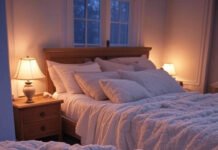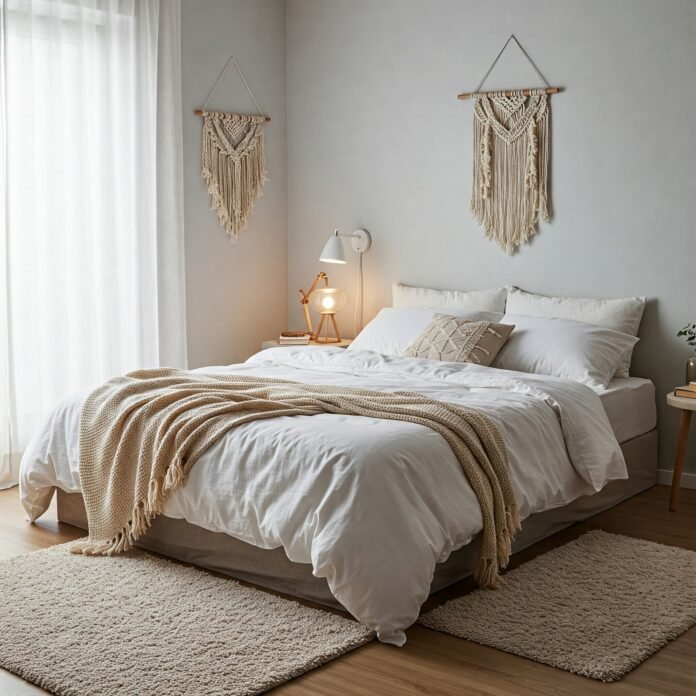Are you tired of tossing and turning? Do you wake up feeling groggy, no matter how many hours you spent in bed? You’re not alone. Millions struggle with sleep, and while many factors are at play, one crucial, often overlooked aspect is your sleep environment. Mastering sleep hygiene and learning how to create the perfect sleep environment can dramatically improve your sleep quality and, consequently, your overall health and well-being.
Think about it: your bedroom should be a sanctuary dedicated to rest. Yet, for many, it doubles as an office, a gym, an entertainment hub, or even a storage unit. It’s time to reclaim your bedroom’s primary purpose and transform it into a haven for sleep. This guide will walk you through the essential steps to optimize your surroundings and finally get the restful sleep you deserve.
Why Your Sleep Environment Matters for Sleep Hygiene
Before diving into how to create the perfect sleep environment, let’s quickly touch upon why it’s so vital. Your surroundings directly influence your body’s ability to fall asleep and stay asleep. Factors like temperature, light, sound, and comfort send powerful signals to your brain. A chaotic, bright, noisy, or uncomfortable room tells your body it’s time to be alert, while a calm, dark, quiet, and comfortable space promotes relaxation and sleep. Prioritizing your sleep environment is a cornerstone of effective sleep hygiene.

Essential Elements to Create Your Perfect Sleep Environment
Ready to make changes? Let’s break down the key environmental factors you can control to enhance your sleep hygiene and create the perfect sleep environment.
Finding the Ideal Temperature for Sleep Hygiene
Temperature is perhaps the most underestimated element of a good sleep environment. Your body temperature naturally drops slightly as you prepare for sleep. A room that’s too hot or too cold can interfere with this natural process, leading to discomfort and wakefulness.
- The Sweet Spot: Most sleep experts recommend a room temperature between 60-67°F (15-19°C). Find the range that feels most comfortable and conducive to sleep for you. As the Sleep Foundation notes, “A cooler room makes it easier to fall and stay asleep.”
- Actionable Tip: Use your thermostat, a fan, or even open a window slightly (if safe and quiet) to regulate the temperature. Avoid extreme temperatures right before bed.
The Power of Darkness in Your Sleep Environment
Light is the most powerful signal to your brain about whether it’s day or night. Exposure to light, especially blue light from electronics, suppresses the production of melatonin, the hormone that regulates sleep. A dark room signals to your brain that it’s time to rest, significantly impacting your sleep environment quality.
- Block it Out: Aim for as much darkness as possible. Even small amounts of light from streetlights, electronics, or hallway gaps can be disruptive.
- Actionable Tips:
- Invest in blackout curtains or blinds.
- Use an eye mask.
- Cover or remove electronic devices with bright indicator lights.
- Avoid screens (phones, tablets, TVs) for at least an hour before bed.
(Placeholder for Image 2: See description below)
Managing Sound in Your Sleep Environment
Unexpected noises can easily jolt you awake. While complete silence might be unattainable or even unsettling for some, controlling the soundscape in your sleep environment is crucial for uninterrupted sleep.
- Reduce Disruptions: Identify common noise sources (traffic, neighbors, internal house sounds).
- Actionable Tips:
- Use earplugs if external noise is a major issue.
- Consider a white noise machine, fan, or app. Consistent, low-level sound can mask sudden disturbances and create a calming backdrop. Studies suggest that white noise can mask background noises and help some people fall asleep faster.
- Ensure windows and doors are properly sealed.
Choosing Comfort: Mattress & Bedding for Sleep Hygiene
Your bed itself is central to your sleep environment. An uncomfortable mattress or scratchy bedding can lead to tossing, turning, and waking up with aches.
- Support and Comfort: Your mattress should provide adequate support for your spine while being comfortable for your preferred sleep position. Bedding should be clean, breathable, and feel good against your skin.
- Actionable Tips:
- Evaluate your mattress – is it supportive or sagging? Mattresses typically need replacing every 7-10 years.
- Choose bedding made from natural, breathable materials like cotton or linen.
- Ensure your pillows support your head and neck alignment.
(Placeholder for Image 3: See description below)
Air Quality and Your Sleep Environment
Good air quality contributes to a healthy and comfortable sleep environment. Stuffy or poor air can lead to congestion or breathing discomfort that disrupts sleep.
- Fresh Air: Proper ventilation helps maintain optimal oxygen levels and removes stale air.
- Actionable Tips:
- Ensure your bedroom is well-ventilated. Open a window slightly if possible.
- Consider an air purifier if you have allergies or live in an area with poor air quality.
- Keep the bedroom clean to minimize dust mites and allergens.
Decluttering Your Sleep Environment for Calm
Physical clutter can lead to mental clutter. A messy bedroom can create a sense of chaos that makes it hard to relax and unwind before sleep. Creating a tidy sleep environment promotes mental peace, an important part of sleep hygiene.
- Visual Peace: A clean, organized room promotes a feeling of calm and control.
- Actionable Tip: Spend a few minutes each day or a dedicated time each week to tidy your bedroom. Put away clothes, clear surfaces, and make your bed.
Beyond the Bedroom: Habits Supporting Your Sleep Environment
While optimizing your physical space is key to sleep hygiene and creating the perfect sleep environment, remember that it works in tandem with your pre-sleep habits. Avoid heavy meals, caffeine, alcohol, and intense exercise close to bedtime. Establish a relaxing evening routine to signal to your body that it’s time to transition towards sleep. The CDC offers helpful general sleep hygiene tips that complement creating an ideal physical space.
Conclusion
Investing time and effort into your sleep environment is one of the most impactful steps you can take to improve your sleep hygiene and achieve better rest. By controlling temperature, light, sound, and ensuring comfort and cleanliness, you create the perfect sleep environment that signals to your body and mind that it’s safe and time to deeply relax. Start with one or two changes this week and notice the difference. Your body and mind will thank you for it!
































